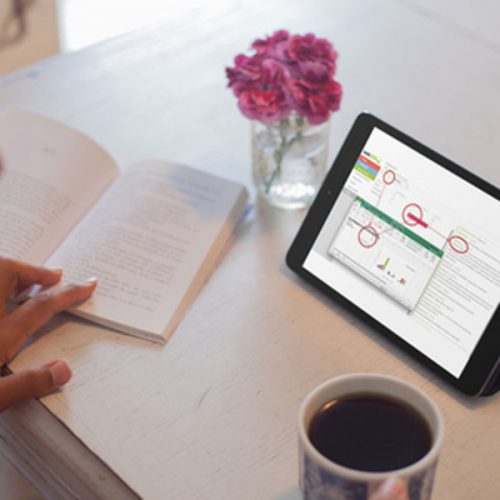
How do We Like to Learn Qualitative Data Analysis Software?* A methodological example of data collection
Fábio Freitas1, Jaime Ribeiro1,2, Catarina Brandão3, Carla Azevedo de Almeida 1,4, Francislê Neri de Souza1,5 António Pedro Costa1
1Research Centre on Didactics and Technology in the Education of Trainers –CIDTFF, University of Aveiro, Portugal. [email protected]
2School of Health Sciences & Center for Innovative Care and Health Technology -CiTechCare, Polytechnic of Leiria, Portugal. [email protected];
3 Faculty of Psychology and Education Sciences of the University of Porto, Portugal. [email protected];
4Faculty of Law, University of Oporto, Portugal. [email protected]
5Centro Universitário Adventista de São Paulo, Brasil. [email protected]
Specific software packages to support qualitative research enable the organization and systematization of data collection and analysis, as well as enhancing the definition of dimensions, categories and subcategories of analysis, an usually very laborious process (Neri de Souza, Costa, & Neri de Souza, 2015).
This excerpt is part of an article (Freitas et al., 2019), in which it is intended to reveal the methodological method of data collection concerning users’ preferences about CAQDAS learning. This study has three research objectives: (1) to identify CAQDAS users’ learning strategies and routines/habits; (2) identify characteristics and features of learning tools most appreciated by users; and (3) explore the reasons why these characteristics are appreciated.
The data was gathered in two separate moments during the second semester of 2017. The first moment aimed at identifying the CAQDAS users’ learning strategies and habits (our first research objective); the second moment also aimed at identifying the CAQDAS users’ learning strategies and habits, and to understand what the user’s value in the CAQDAS learning tools and why (second and third research objectives).
Two instruments were used: first a focus group and then a questionnaire. Both the focus group and the questionnaire had as objectives: (i) to enumerate the explanatory needs of CAQDAS in the learning process; (ii) identify CAQDAS learning strategies for various user profiles; (iii) identify the most important Usability characteristics for the CAQDAS learning process; (vi) know the functionality preferences for an online learning / help tool in a CAQDAS. The focus group provided rich and in-depth data, compared with the questionnaires, namely: (i) knowing the users’ difficulties in the CAQDAS learning process; and (ii) to discuss the organization of contents in a CAQDAS learning tool.
The script was developed according to the first research goal and then validated by two experts in education technology. The group was moderated by the first author and had four participants, researchers with a minimum of two years’ experience in the use of CAQDAS. This number of participants, albeit reduced, was due to time constraints during the process of contacting researchers with a recognized expertise in the use of qualitative methods who were available to be in the focus group. The group had researchers aged from twenty to sixty years old, with background from social sciences; three hold a PhD, one is a PhD student. As already stated, our aim at this moment was to identify these experts’ learning strategies, and the routines used to enhance learning skills regarding the use of CAQDAS (first research goal). The focus group was recorded and then verbatim transcribed; data was analysed by the first researcher using the content analysis technique in line with Costa and Amado’s perspective (2017, 2018) with the support of webDQA®.
In the second moment of the study, we adopted a method that allowed us to access a representative sample of CAQDAS users. Data was gathered with an online questionnaire using Google Forms®. The questionnaire was composed of 29 items divided into five sections. The 1st section, called “CAQDAS learning habits”, focused on the users’ routines and learning preferences; the 2nd section “Usability and User Experience of CAQDAS self-learning tools” intended to gather users’ opinions regarding Usability and User Experience; the 3rd section “Usability Expectations in a self-learning platform” had the purpose to reveal users’ expectations of what would be an ideal tool for self-learning (usability); the 4th section “Characterization of the CAQDAS’s uses” sought to know some of the user’s software features. Finally, the 5th section “About CAQDAS users”, collected the users’ profile data. Of the 29 questions asked, 26 were closed and three were open, one in the second section and two in the third section. Before being made available, que questionnaire was validated by four experts in educational technology. The questionnaire was disseminated among CAQDAS users through e-mails, social networks (qualitative research groups), forums for various CAQDAS software packages, workshops, and an international congress on qualitative research.
The questionnaire was answered by 232 users from 29 different countries and representing a diversity of 26 CAQDAS. Fifty seven percent of respondents were female (n = 133) and 43% were male (n = 99). In terms of age, 16% (n = 36) were between 20-30 years, 33% (n = 77) between 31-40 years, 31% (n = 72) between 41-50 years, between 51-60 years, 0.7% (n = 2) between 61-70 years and 0.3% (n = 1) between 71-80 years. In terms of education, the majority are PhD students with 31% (n = 73), followed by PhD with 29% (n = 68), masters students 15% (n = 35), with a Postdoctorate 10% (n=22), with a degree 4% (n=9) and finally, researchers doing postdoctoral research (n=5).
Due to the immense variety of CAQDAS patented in the questionnaire, it was decided to focus in this paper the data regarding the five most represented CAQDAS, namely: webQDA® (n=109), NVivo® (n=85), Atlas.Ti® (n=48); QDA Miner® (n=11); MAXQDA® (n= 29), gathering a total of 282 answers. This apparent gap, compared to the total number of participants in the questionnaire (n=232), reflects that some researchers use more than one CAQDAS package.
Regarding the coding for the second research goal, the data from closed questions were coded by the fifth author and validated by the first one and the data have been treated in the Google Forms® application. Data from open questions was coded by the fifth and the first author while discussing the coding. Data for the third research goal was coded by the fifth author and validated by the first. The method used for analysing the qualitative data was content analysis (Costa & Amado, 2017, 2018; Esteves, 2006) through webQDA® software.
This research focused the process of learning a Computer Assisted Qualitative Data Analysis Software (CAQDAS). By doing so, we intended not only to gain a better understanding of the strategies and routines of researchers (regarding CAQDAS) but also to give voice to those who need to use and, hence, to learn in the most effective way, how to benefit their own research with the use of CAQDAS. Understanding the needs and practices of this specific population supports the definition of good resources, thus promoting the competencies of researchers and, consequently (we believe) the quality of the research they develop.
Results show that when learning a CAQDAS, the users resource to various strategies, which we believe reflects their own search for tools that best fit their learning style, and their specific questions or doubts at a given moment. Nonetheless, tutorial videos seem to be one of the preferred strategies, a result that supports the importance of visual and practical demonstrations of tools and procedures, as well as the possibility of the users being able to control the learning process (namely with the use of pause, fast forward, etc). Despite some resources and strategies emerging in our results as being more used and, hence, more important to users, we believe it is fundamental to continue to present researchers with the various existing resources, while continuing to invest in improving all of them, not only the ones which are most used. This is based in the notion that adult learners value learning processes that account for their own specificities. Therefore, having the possibility to use the resource that each researcher finds to fit his/her own learning style is fundamental and creates optimal conditions for researchers to engage in the process of learning to use CAQDAS. This allows them to self-manage their learnings process, which is highly valued by adult learners.
Given the importance of creating conditions for adult learners to engage in learning processes that consider their specific and individual needs, we believe that CAQDAS presenting several learning tools is extremely positive. This creates adequate conditions for a self-directed learner – such as researchers – to choose autonomously the tools he/she feels is the most appropriate for him/her in a particular moment and in relation to a specific task (e.g., considering the type of data in the research project).
* Excerpt from Freitas’ article for publication in The Qualitative Report
References
Costa, A. P., & Amado, J. (2017). Análise de Conteúdo em 7 passos com o webQDA (Versão 1, pp. 1–7). Oliveira de Azeméis: Ludomedia.
Costa, A. P., & Amado, J. (2018). Content Analysis Supported by Software (1st ed.). Oliveira de Azeméis: Ludomedia.
Esteves, M. (2006). Análise de Conteúdo. In J. Á. de Lima & J. A. Pacheco (Eds.), Fazer Investigação: Contributos para a Elaboração de Dissertações e Teses (pp. 105–126). Porto: Porto Editora.
Freitas, F., Ribeiro, J., Brandão, C., Costa, A. P., Almeida, C. A., & Neri de Souza, F. (2019). How do We Like to Learn Qualitative Data Analysis Software? The Qualitative Report (TQR), inpress.
Souza, D. N. de, Costa, A. P., & Neri de Sousa, F. (2015). Desafio e Inovação do Estudo de Caso com o Apoio das Tecnologias. In F. Neri de Sousa, D. Neri de Souza, & A. P. Costa (Eds.), Investigação Qualitativa: Inovação, Dilemas e Desafios (1a, Vol. volume 2, pp. 143–162). Oliveira de Azeméis: Ludomedia.





Leave a comment